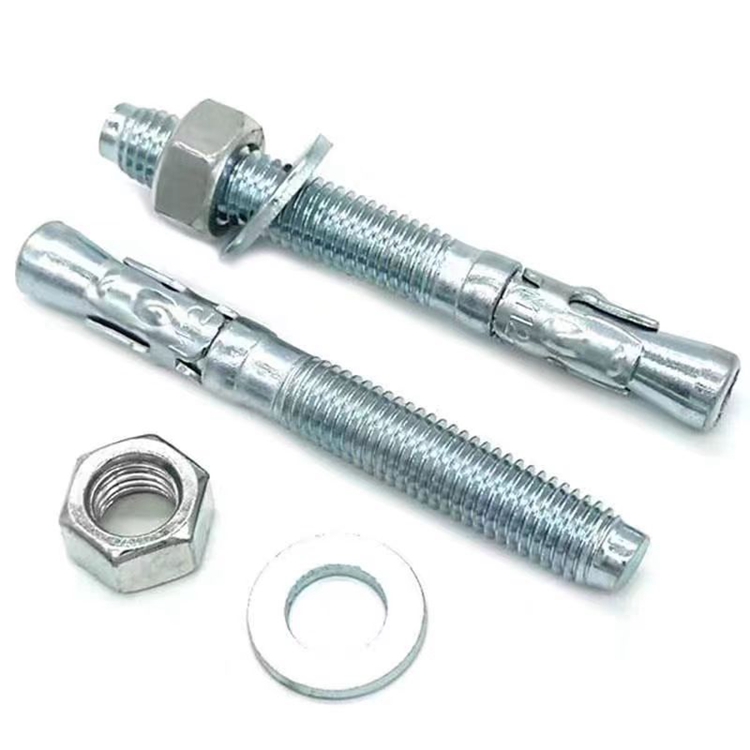Durable Stainless Steel Stud Bolt and Nut Set for Reliable Fastening Solutions
ធ្នូ . 25, 2024 19:24 Back to list
Durable Stainless Steel Stud Bolt and Nut Set for Reliable Fastening Solutions
The Role of Stainless Steel Stud Bolts and Nuts in Modern Engineering
In the world of engineering and construction, the significance of reliable fastening solutions cannot be overstated. Among the various types of fasteners, stainless steel stud bolts and nuts have emerged as a superior choice for countless applications. Their unique properties and benefits make them an integral part of mechanical assemblies, ensuring strength, durability, and resistance to various environmental factors.
Understanding Stainless Steel
Stainless steel is an alloy composed primarily of iron, along with varying amounts of chromium, nickel, molybdenum, and other elements. This composition grants stainless steel its remarkable corrosion resistance, making it suitable for use in harsh environments where exposure to moisture and chemicals is prevalent. The addition of chromium forms a passive layer of chromium oxide on the surface, preventing further corrosion and giving stainless steel its distinctive appearance.
Stud Bolts and Their Applications
A stud bolt is a threaded rod that is typically used in conjunction with nuts to fasten two or more components together. Unlike traditional bolts that have a head, stud bolts are fully threaded throughout their length. This feature provides versatility in usage, particularly in applications where space constraints may prevent the use of a traditional bolted connection.
Stainless steel stud bolts are commonly used in industries such as oil and gas, chemical processing, construction, and automotive. They are ideal for securing flanged connections in pipelines or equipment where a strong, leak-proof seal is essential. The ability of stainless steel stud bolts to withstand high temperatures and pressures makes them indispensable in critical applications like reactors, boilers, and heat exchangers.
The Importance of Nuts
Nuts are the counterpart to bolts and are essential for creating a secure fastening mechanism. A nut, when paired with a stud bolt, helps distribute loads evenly and provides a means of adjustment and locking the assembly in place. Stainless steel nuts, particularly those made from the same grade as the stud bolts, ensure compatibility and maintain the integrity of the joint.
stainless steel stud bolt and nut

Different types of nuts, such as hex nuts, lock nuts, and flange nuts, offer various advantages depending on the application. Hex nuts are the most commonly used and are versatile enough to suit numerous tasks. Lock nuts provide additional resistance to vibration, helping to prevent loosening, while flange nuts distribute loads over a larger area, reducing the risk of damage to the mating surface.
Advantages of Stainless Steel Stud Bolts and Nuts
1. Corrosion Resistance The primary benefit of using stainless steel fasteners is their ability to resist rust and corrosion. This property extends the lifespan of the components they secure, reducing maintenance costs and downtime.
2. Strength and Durability Stainless steel is known for its high tensile strength, making stud bolts and nuts capable of withstanding significant loads without deforming or breaking.
3. Aesthetic Appeal The bright, smooth surface of stainless steel offers an attractive finish that is often desirable in visible applications, enhancing the overall look of structures and machinery.
4. Temperature Resistance Stainless steel fasteners maintain their strength even under extreme temperature fluctuations, making them suitable for both hot and cold environments.
5. Environmental Friendliness Stainless steel is recyclable, making these fasteners an environmentally responsible choice for sustainable engineering practices.
Conclusion
In conclusion, stainless steel stud bolts and nuts play a vital role in modern engineering and construction. Their unique combination of strength, durability, and resistance to corrosion makes them the preferred choice for a wide range of applications. As industries continue to strive for efficiency and reliability, the importance of high-quality fastening solutions like stainless steel stud bolts and nuts cannot be overstated. Emphasizing their use not only improves the longevity of structures and machines but also promotes environmental sustainability through their recyclable nature.
Latest news
-
Reliable Axle Nuts Supplier | High-Quality Automotive Parts
NewsAug.19,2025
-
Premium Wire Bolts Suppliers | Durable & Reliable Fasteners
NewsAug.18,2025
-
Leading Metric Wood Screw Companies & Manufacturers
NewsAug.17,2025
-
Top Wire Bolts Suppliers - Quality & Durable Fasteners
NewsAug.15,2025
-
Trusted Wire Bolts Company | Quality Fasteners Supplier
NewsAug.14,2025
-
Reliable Wire Bolts Suppliers & Manufacturers for Global Needs
NewsAug.13,2025
